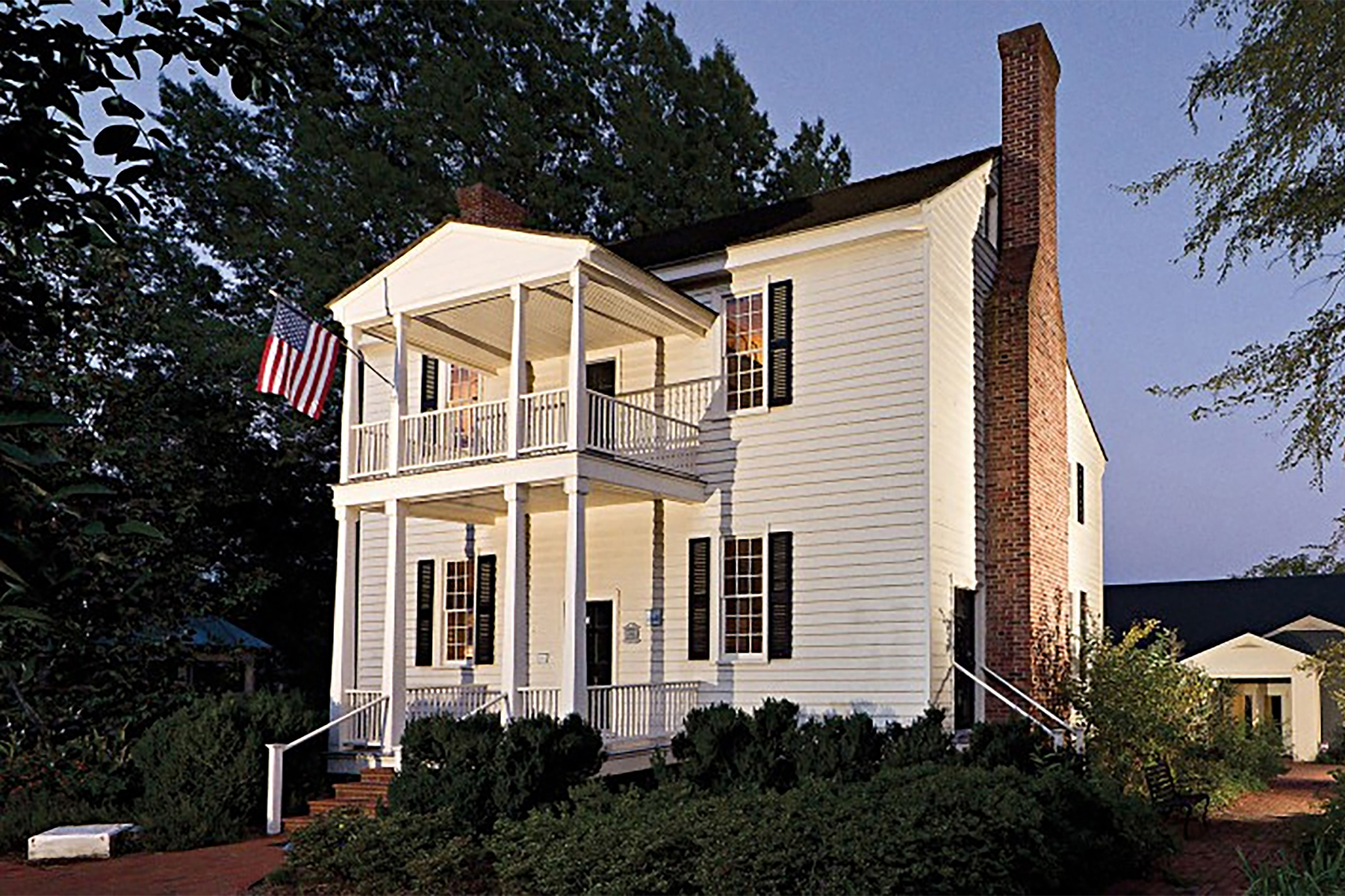Our Heritage
The House Called “Wake Forest”

The Cavin Jones House turned 200 years old in 2020. Like most landmark anniversaries and birthdays during the pandemic, planned celebrations went unnoticed. Dr. Calvin Jones named the house and plantation “Wake Forest.” However, it has been called a number of names throughout history – the President’s House, the Charter House, and the Birthplace. No matter what it was called, there is no doubt that the house has lived a charmed life over two centuries. Built in 1820 in the federal style with a hall/parlor plan, the house was constructed for the family of Davis Battle. It is unclear if the Battle family ever lived in the elegant but small plantation house. Calvin Jones purchased the house and its 615 acres of farmland along Richland Creek when it was relatively new. While the Jones family occupied the house only a dozen years, they made quite a mark on its history.
Dr. Jones married for the first time at age 44, and he and his wife Temperance Bodie Williams had four children while living in the house. In 1823, Dr. Jones performed what was likely the very first successful cataract surgery in the United States in his home office. About this time, Jones also received congressional approval for a post office called “Wake Forest” which he also operated out of the house. In August of 1832, the house and land were sold to the North Carolina Baptist Convention for the purpose of starting a college to educate young men for the Christian ministry. The third (or perhaps the second – it’s not officially known) residents of the house were Samuel and Sarah Wait and their young daughter Ann Eliza. The Waits moved into the house around Christmas of 1832 and made it their home when they weren’t traveling the muddy roads of North Carolina to raise funds for the yet-to-be-established college. On February 3, 1834, Wait sat in the parlor of the house with 16 students, and what today we know as Wake Forest University was born.
With the college came mobility. Around 1835, the house was moved about 150 yards south to make way for the first permanent college building. Within 20 years, the house would again be moved, this time a few hundred yards northwest near the present-day Ledford Center of Southeastern Baptist Theological Seminary (SEBTS). In May of 1956, Wake Forest College moved to Winston-Salem with a grant from the family of tobacco magnate R.J. Reynolds. SEBTS had plans to make changes to the campus to better fit its needs. Part of that plan was for the demolition of the house to make way for a cafeteria. A group of determined ladies from the Wake Forest Garden Club stepped in before demolition plans could proceed be-cause they saw the importance of the run-down house to the history of both Wake Forest University (now in Winston-Salem) and the town that carries the university’s name. Headed by a committee consisting of Kathleen Mackie Lake, Annie Gill Harris, Ruth Snyder, and others, funds were raised to move the house to safety. This group approached the trustees of Wake Forest University and requested to move the house to the 400 block of North Main Street on a four-and-a-half acre plot that was the original athletic field for the college. This block was the only land the college did not sell to SEBTS in 1956, and is the only piece of land never sold since its purchase from Dr. Calvin Jones for the college in August 1832.
By the fall of 1957, the house was once again on the move. Having sat on blocks for months while funds were raised for its restoration, Dr. Christopher Crittenden, grandson of sixth Wake Forest President Charles Taylor, and then-head of the North Carolina Department of Archives and History, took over the restoration project. Nearly 20 years later with a grant from the American Bicentennial Commission, restoration was completed and the house opened as a museum. Since 2014, the house’s interior has been restored to reflect four of its historical uses: the plantation home of Dr. Calvin Jones, the birthplace of Wake Forest University and home of first president Samuel Wait, a boarding house for the university’s medical school, and finally, a men’s dorm. Today, the Dr. Calvin Jones House is the centerpiece of the Wake Forest Historical Museum complex and is open for tours during the museum’s visiting hours. Check hours and tour details at wakeforestmuseum.org or call 919-556-2911.
Photo courtesy of Ken Bennett, Wake Forest University.
Ed Morris
Executive director of the Wake Forest Historical Museum & Wake Forest College Birthplace.

